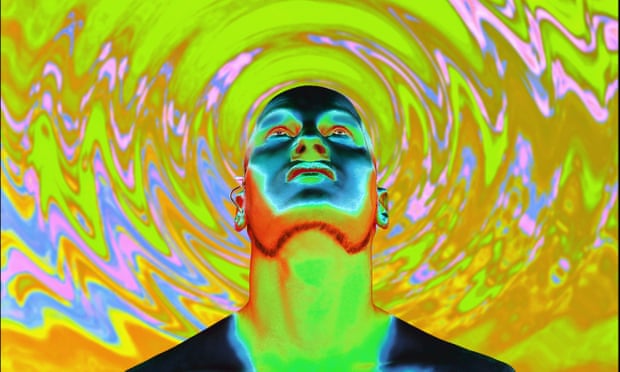Brain scans of individuals high on the drug revealed that the chemical allows parts of the cortex to become flooded with signals that are normally filtered out to prevent information overload.
The drug allowed more information to flow from the thalamus, a kind of neural gatekeeper, to a region called the posterior cingulate cortex, and it stemmed the flow of information to another part known as the temporal cortex.
This disruption in communication may underpin some of the wacky effects reported by LSD users, from feelings of bliss and being at one with the universe to hallucinations and what scientists in the field refer to as “ego dissolution”, where one’s sense of self disintegrates.
For the study, the researchers invited 25 healthy participants into the lab to be scanned under the influence of LSD and, on another occasion, after taking a placebo. They were shown around the scanner beforehand to ensure they felt comfortable going inside when the drug took hold. Had the machine suddenly taken on a threatening demeanour, the scans might not have come out so well.
The scientists wanted to test a hypothesis first put forward more than a decade ago. It states LSD causes the thalamus to stop filtering information it relays to other parts of the brain. It is the breakdown of this filter that gives rise to the weird effects the drug induces, or so the thinking goes.
“The world around us is not the world we perceive because the thalamus filters out what it considers to be irrelevant information,” said Katrin Preller, a researcher on the project at the University Hospital for Psychiatry in Zurich. “We don’t necessarily perceive all there is because that would be an overload of information.”
Scans of the volunteers’ brains suggested there may be some truth to the hypothesis. On LSD, the thalamus let more information through to some parts of the brain and suppressed information bound for others. “What we found is that the model is mostly true, but how information is distributed to the cortex under LSD is much more specific than it predicts,” said Preller.
It is unclear how messing with the flow of information in the brain gives rise to particular sensations linked to LSD, but there are some hints from previous work. The posterior cingulate cortex, for example, is thought to play a role in shaping one’s sense of self, so overloading it might drive feelings of self-disintegration.
LSD, or lysergic acid diethylamide, was first synthesised in 1938 and had a profound impact on psychology and psychiatric research throughout the 1950s and 60s. While its adoption as a recreational drug led to it being banned, many scientists now suspect it could be a powerful new weapon in the battle against depression and other mental disorders.
“We are getting nearer to understanding the complexity of what happens with LSD in the brain and that is particularly important if we are to develop new medicines,” said Preller. The latest research is published in Proceedings of the National Academy of Sciences.
The work follows a major study in 2016 which found that under the influence of LSD, the brain recruited many more regions for visual processing than normal, enriching the images people saw even when their eyes were shut. The research was the first to show what the brain looks like on LSD on a modern scanner.
The Guardian
More about: LSD
















































